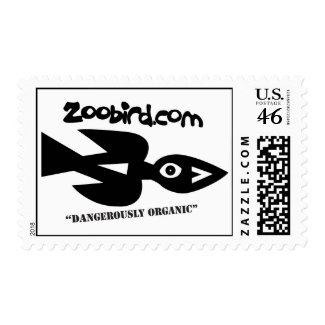Dangerously organic!
Hiking in Ichetucknee Forest this morning, I was reminded that nature observation requires a few basic skills. Spontaneity is high on the list. When you spot a pair of slugs slowly sliding over each other, you must be willing to forego all plans and stop to watch them. You may never again see two slugs interacting. Next, you must have the patience to sit quietly for hours watching your slimy subjects for any hint of interesting behavior. Being observant also helps. Make mental notes of distinguishing marks that will help you identify the species when you get home to your field guide (you know, the “field guide to slugs;” the one you’ve stayed up way-too-late reading way-too-many times). You must be content with meager results. This will ease the disappointment of realizing dusk is falling quickly and your slugs have barely moved for two hours. Be thorough. Before you leave, move close so you can see any smaller physical details. You might even want to prod them a little with a stick to see their undersides. Lastly, as in all things, you should have a sense of humor. It will get you through little setbacks, like when you discover that two slugs you’ve been observing for a couple of hours are actually a pair of squirrel turds.
While I’m usually unwavering in my appreciation of nature’s gifts, I could have spent far less time contemplating those two turds and been content. As I sulked down the trail toward home, I consoled myself with the notion that I probably wasn’t the only creature out there that could list turd-watching (do aficionados prefer to call it “turding?”) as one of the most significant achievements of my day. In fact, some species live for the stuff.
In the hardwoods and swamps of the Ichetucknee Forest, and in virtually every other habitat in Florida, scarab beetles hailing from nearly 250 known species spend their days cleaning up waste produced by larger species. High in nutrients (a lot of plant material passes through the digestive tract undigested) and easily obtained, dung is a precious commodity for which scarabs compete savagely. Ideally, they will avoid conflict by being first to arrive at a new heap where they’ll quickly sculpt a ball several times their own size and roll it to a waiting underground chamber. The beetle then lays eggs inside the dung ball which will serve as food for the larvae when they hatch.
In most cases, being first on the scene is largely a matter of luck; being at the right place when a passing animal unloads. But, a few species have learned to buck the odds. Every morning in the forests of Panama, certain species of scarab fly into the tree canopy in search of howler monkeys. Positioning themselves strategically on the animals butt, the scarab waits for the monkey to defecate. It then jumps aboard the first train out of the station and clings for dear life as it plummets 100 feet to the ground. Similar, though less extreme dramas are played out on the back-side of other animals such as kangaroos, wallabees and sloths.
But scarabs are not the only connoisseurs of feces. If you’ve ever had a pet rabbit, you know about their not-so-adorable habit of eating their own poop. Coprophagy is common to a huge assortment of animals—mostly herbivores, whose digestive systems are relatively inefficient. Giving the food another pass through the digestive tract allows the animal to digest more of the nutrients from it. Pigs, rabbits and most rodents are habitual coprophags.
For some animals, including our beloved manatees, coprophagy aids digestion in another way. Because plant material is difficult to digest, these animal’s digestive systems are full of bacteria that break it down. However, these bacteria are not present in newborn calves. To get bacteria in their own gut, the babies must eat some bacteria-rich feces of an adult.
For those species whose survival doesn’t depend on feces, attitudes toward the stuff are decidedly less enthusiastic. Most birds avoid the stuff altogether; a fact that was capitalized upon by the Big Girl when she designed the amazingly turd-like caterpillars of swallowtail butterflies. A similar strategy keeps the white egg masses of Dobson flies safe from small birds as they glean the leaves of trees overhanging rivers, where these eggs are deposited.
While we can't know what goes on in a bird's brain, it's often hard not to anthropomorphize. For instance, when we see terns deliberately (and very accurately) dropping turd bombs on animals approaching their nests in sand dunes, they clearly seem to know it is disgusting. For turkey vultures, being disgusting comes naturally. Besides being famously hard-to-watch when eating, they are equally gross when they poop on their own legs and feet to keep them cool.
The only animals that consider wearing poop to be a good thing are some humans. In some cultures, it is good luck when a bird poops on your head. I prefer to take my chances.
(NOTE: I’m often asked what inspires these “reveries” (thanks Lola). Today’s came on the wings of a Carolina wren. As I sat on my patio, staring at a blank, imposing computer screen and hoping for a sign, a tiny wren landed on top of the monitor. It seemed as startled by its choice of landing spot as I was and immediately flew away. But, not before depositing a little gift on my screen. Not quite the sign I was looking for, but who am I to question the Muse.)
*
Comment
-
Comment by Michael Levin on February 11, 2011 at 7:25am
-
That's so funny! Lars, this article made my day. I got a call from Argentina yesterday alerting me to your adventures planned for this weekend. Had I seen them? Was I planning to go? I have been on your Payne's Prairie walk once. Remember? You autographed a copy of your book for me. I got some photos of gators basking in the sun. Huge gators, within reach. I've done Rock Springs several times on my own. In fact, here's a photo I got in 2002 or so that I treasure:
 I took my friends Debbie (from the U.K.) and Christian (Chilean) out in one of those aluminum canoes they rent at Wekiva Springs. We paddled downstream about 20 minutes and then spotted this gator on the bank. Seriously, this was one large gator. I got a photo and Debbie informed us that we were going back. Now. End of story. We headed back, turned in our canoes and went home.
I took my friends Debbie (from the U.K.) and Christian (Chilean) out in one of those aluminum canoes they rent at Wekiva Springs. We paddled downstream about 20 minutes and then spotted this gator on the bank. Seriously, this was one large gator. I got a photo and Debbie informed us that we were going back. Now. End of story. We headed back, turned in our canoes and went home.Loved the story. Maybe I'll see ya this weekend. Best, Mike
© 2025 Created by Michael Levin.
Powered by
![]()






You need to be a member of Zoobird to add comments!
Join Zoobird